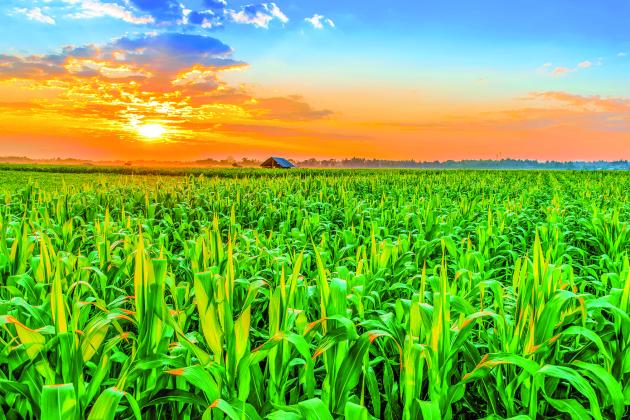Image
Body
By Silke Schmidt
Agricultural sustainability has long been a buzzword but defies an easy definition. When AAE professor Paul Mitchell speaks with farmers, he likes to use safe driving as an analogy. “It’s hard to measure ‘safe driving’ but easy to measure driving below the speed limit,” says Mitchell. “Both ‘safe driving’ and ‘sustainability’ are complex umbrella terms, so we need to define specific practices to study their value.”
In the case of agriculture, these are practices for raising livestock or growing crops. Most efforts to develop sustainable practices emphasize their environmental benefits. But those make up just one of the three pillars of agricultural sustainability. The other two—economic profitability and social equity—are often underappreciated.
Focusing on economics can help farmers operate more sustainably without reducing their income. That’s why Mitchell and his U.S. Department of Agriculture (USDA) colleague, Fengxia Dong, used the example of U.S. corn growers to quantify the economic benefits of adopting sustainable practices.
Mitchell and Dong used the 2010 USDA Agricultural Resource Management Survey to analyze the responses of almost 1,800 conventional corn growers in 19 states to 73 questions about their use of sustainable practices. First, the researchers calculated sustainability scores, which convert the survey responses to a single number between 0 and 100. These scores are weighted sums of the reported practices, with lower weights for commonly used practices that do not help differentiate farms and higher weights for rarely adopted practices.
For example, a commonly used practice is the application of lime to corn fields to prevent soil from becoming too acidic. A much smaller number of farmers analyze within-field soil variability for precision lime application, where the amount of lime depends on soil texture, organic matter content and other features. Thus, lime application receives a lower weight than precision lime application. Other highly weighted practices include the use of advanced, non-chemical pest management strategies, planting crops other than corn during the last four years and installing terraces or other structures to reduce soil erosion.
The calculated sustainability scores were highly variable. Half the farms had scores between 50 and 75 and about 10% had scores below 25 or above 75. The sample average was 54.2. Next, the researchers analyzed how sustainability scores affected corn yield and farm income. They found that farmers who used more sustainable practices had a higher average income after controlling for other factors that influence revenue. For example, moving from the average score of 54.2 to the top 10% of scores increased the average income by 2.3%, mostly due to higher average corn yields and reduced variability.
However, using more sustainable practices resulted in more downside risk, or a higher likelihood of unusually low yields. This, says Mitchell, is what farmers are most nervous about. When the average net revenue is $15 per acre, many farmers aren’t comfortable with, say, doubling the chance of losing $10 per acre from 3% to 6%.
The reason for the higher downside risk is that newer practices have less historical support than traditional methods. The resilience of the latter is due to the lessons people have learned collectively from past weather extremes, atypical pest infestations and other unusual events.
“Take the example of the cold and wet spring of 2019 that resulted in a record of more than 10% of the country’s corn acres not being planted,” says Mitchell. “This was certainly bad but also created an incentive for farmers to purchase different equipment and learn about field management strategies for soils with greater moisture, which means they will be better prepared to handle unusually wet springs in the future.”
The study highlights the importance of considering the full range of consequences of adopting sustainable practices: effects on average income and variation around it, along with effects on downside risk. If the researchers had only modeled the first two quantities, the increase in the downside risk would have been missed.
Mitchell recommends risk mitigation through widely available multiperil crop insurance, a form of federal subsidy with a guaranteed minimum income in case of crop loss. Understanding and adjusting to the economic impacts of sustainable practices, says Mitchell, will help increase their adoption in U.S. agriculture.
Despite the higher downside risk, the analysis revealed a positive net effect of adopting more sustainable practices. This is what Mitchell emphasizes when he speaks with farmers as part of his UW Extension appointment.
“I can now tell them with confidence that sustainable practices will increase their average income as long as they buy insurance to protect themselves against the greater downside risk.”


